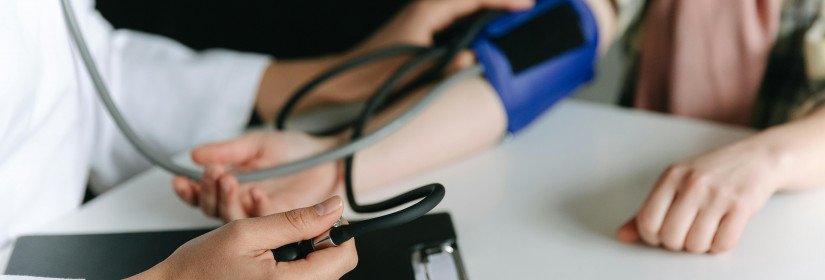
What makes high blood pressure particularly dangerous is that it often doesn't show any symptoms; you might not feel anything is wrong while underlying damage is being done to your arteries, heart, and other organs.
According to the American Heart Association, nearly half of American adults battle high blood pressure, and many are unaware of this condition, earning it the nickname "the silent killer."
Persistent high blood pressure can harm your blood vessels, greatly increasing the risk of life-altering or even fatal diseases.
How to Detect High Blood Pressure
Since high blood pressure typically lacks clear symptoms, the most effective way to detect it is through regular checks by your healthcare provider.
Skipping doctor visits because you feel fine can be risky. If your blood pressure is normal, annual wellness checkups are sufficient. If it's high, your doctor might suggest monitoring your blood pressure at home regularly.
Home blood pressure monitors are readily available at pharmacies or online. It's important to select a monitor with a cuff that fits your arm and has been clinically validated for accuracy.
Avoid smoking, caffeine, or exercise at least 30 minutes before taking your measurement.
New Blood Pressure Guidelines
Recent guidelines from the American Heart Association have adjusted the threshold for hypertension.
Now, a blood pressure reading of 130/80 mm Hg is considered high, whereas previously 140/90 mm Hg was the standard. Elevated blood pressure is noted from 120-129/80, and normal range is below 120/80.
Steps to Manage Your Blood Pressure
If you're diagnosed with high blood pressure—or aim to maintain a healthy lifestyle—it's crucial to manage your condition effectively.
Here are five steps recommended by the American Heart Association:
- Know your numbers: Understanding your target blood pressure is essential.
- Collaborate with your healthcare provider: They can guide you in forming a plan suited to your needs.
- Lifestyle adjustments: These often include maintaining a healthy weight (BMI of 18.5 to 24.9), eating nutritious food (fruits, vegetables, whole grains), lowering sodium intake (under 1,500 mg per day), regular physical activity (40 minutes, 3-4 times per week), and reducing stress.
- Avoid unhealthy habits: Quit smoking, limit alcohol (one drink per day for women and two for men), and moderate caffeine consumption (less than 2-3 cups of coffee per day).
- Monitor at home & adhere to medication: Regularly check your blood pressure and follow prescribed treatments.
Check Out: The Far-Reaching Impacts of Obesity on Overall Health
Despite its stealthy nature, high blood pressure is manageable through proactive health choices and medical intervention when needed. It's well worth the effort to support your heart health and overall well-being.
-
Subscribe to our Weekly Newsletter and get instant access to new articles straight to your inbox!

Weekly newsletter
Cut through the clutter with our weekly roundup, highlighting the biggest news in finance, government benefits, housing, career, and more. Join the newsletter that respects your time and intelligence.
Stay Informed with the Latest in Health
From breakthrough medical research to wellness tips, be updated with the latest health trends and
advice.
Your Weekly Dose of Health, Directly to Your Inbox
Join our community of health enthusiasts by subscribing to our newsletter, and embark on a transformative journey towards achieving your optimal well-being.







